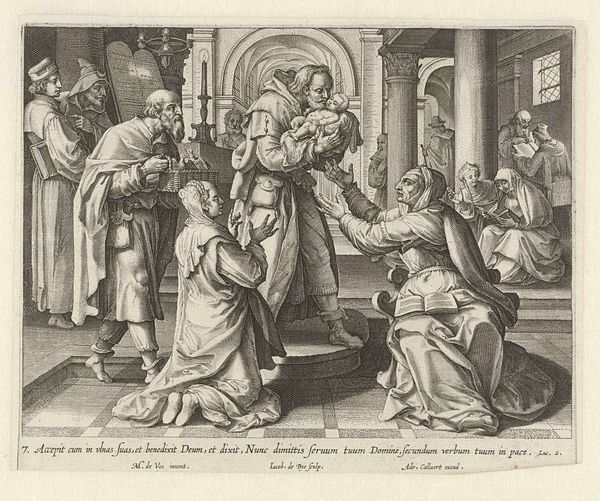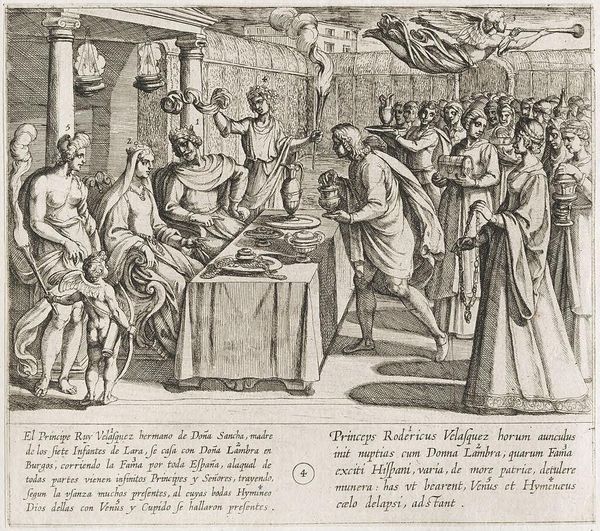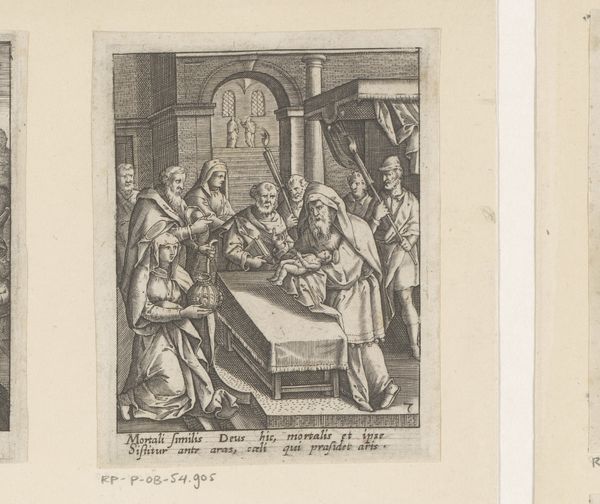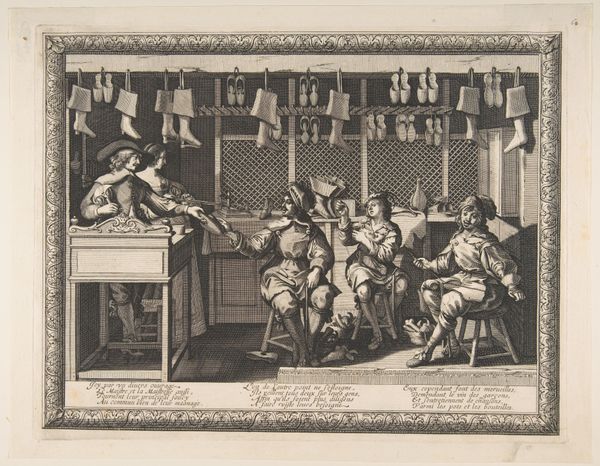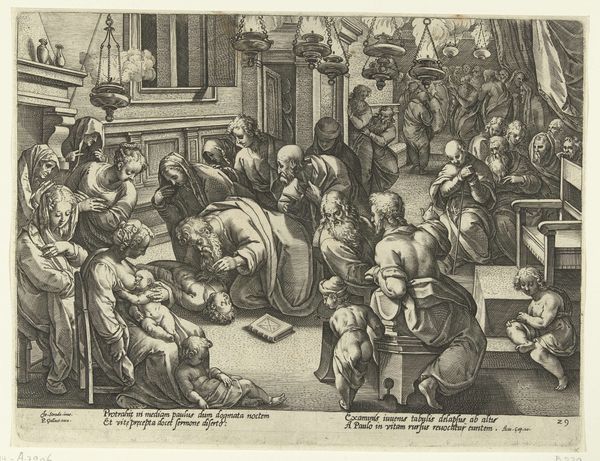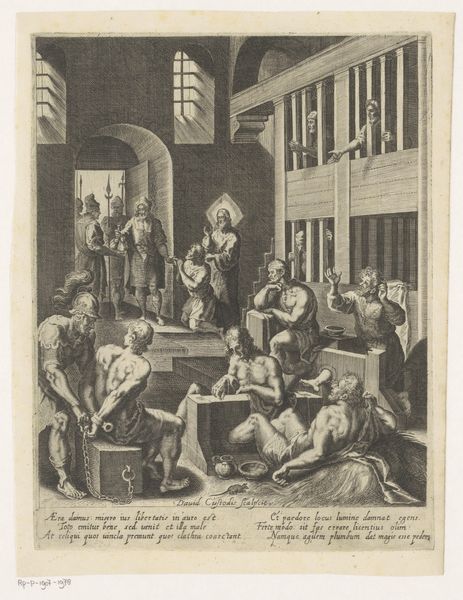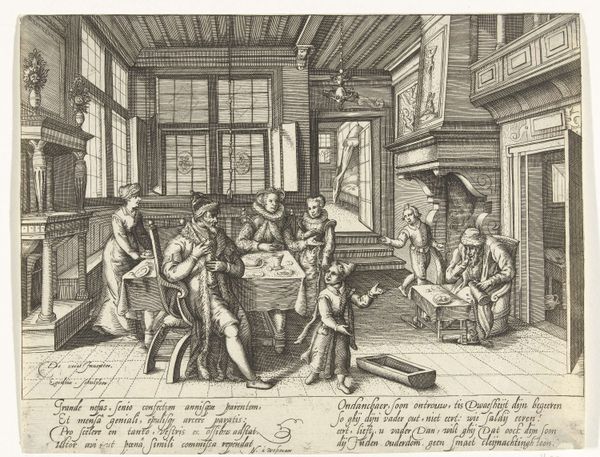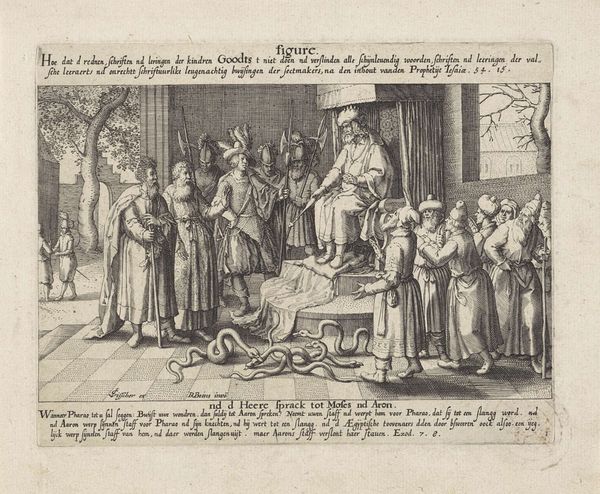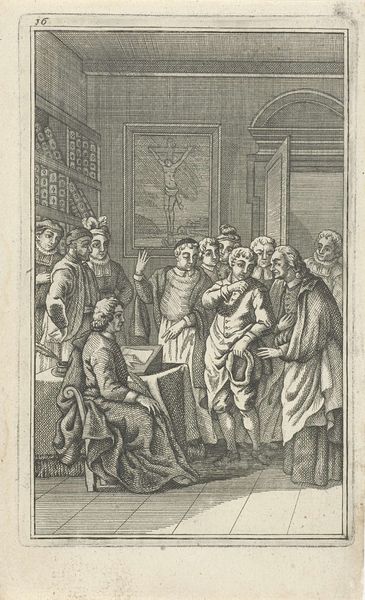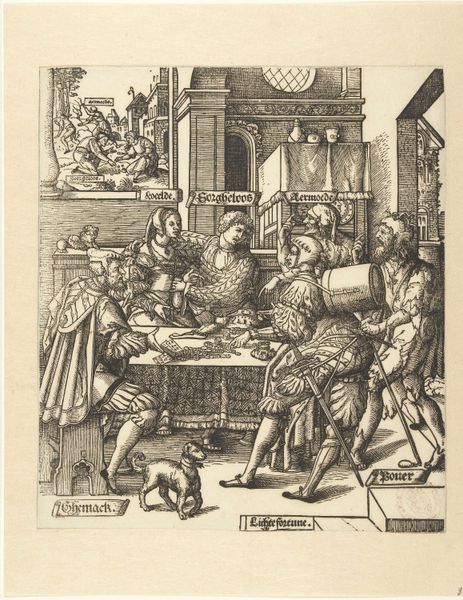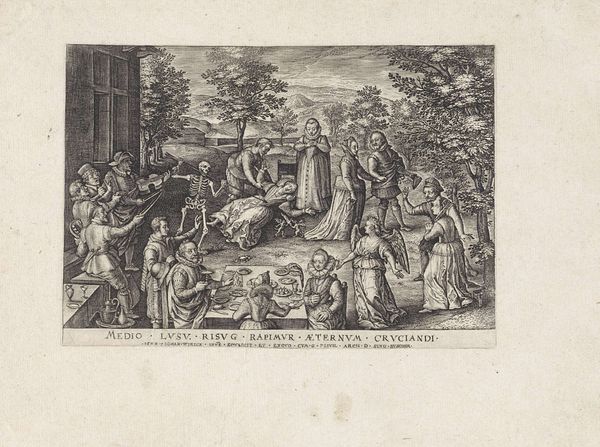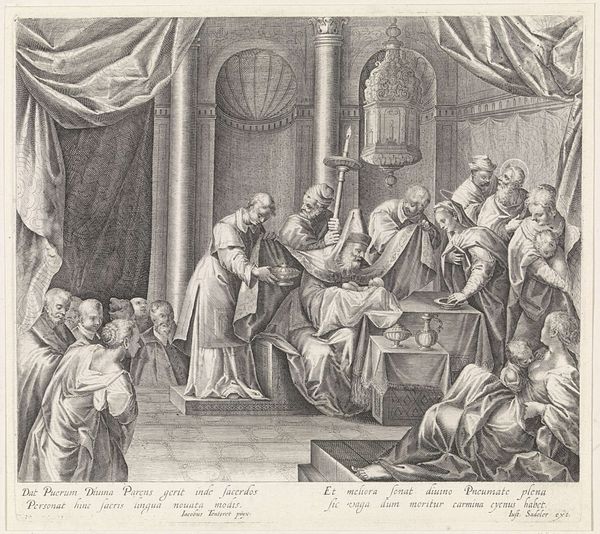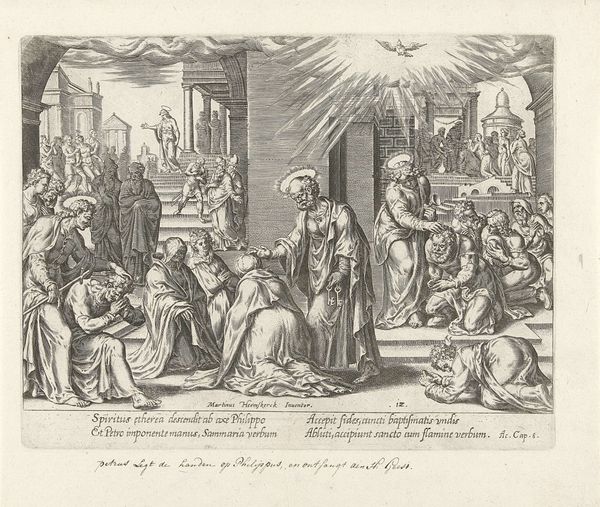
print, engraving
#
medieval
#
narrative-art
# print
#
figuration
#
genre-painting
#
history-painting
#
engraving
Dimensions: height 67 mm, width 98 mm
Copyright: Rijks Museum: Open Domain
Curator: Pieter Hendricksz. Schut's engraving, "Doop der wederdopers, 1535," produced sometime between 1629 and 1652, offers us a glimpse into a controversial historical moment. Editor: It's stark, isn't it? The sharp lines and the way the artist crams so many figures into a small space creates a real sense of claustrophobia and tension. Curator: Exactly. This work depicts the Anabaptist movement of 1535. Schut is positioning the viewer to observe an Anabaptist baptism taking place indoors, in a contained almost secretive setting, you feel it too. Editor: The composition, with figures clustered around the baptismal basin, speaks volumes. Their somber faces, the kneeling posture of some participants - it all underscores the weighty significance of this ritual, and possibly a clandestine quality related to potential risks. We know they were not a universally supported community. Curator: Right, the image becomes a site for exploring themes of religious identity, marginalization, and social conflict. How might the 17th-century viewer have interpreted it, especially in the context of ongoing religious tensions and persecution across Europe? How do gender roles, the clear power dynamic played out on the two individuals centered and kneeling, reflect back contemporary debates on religion, authority, and individual autonomy. Editor: It is about power, and visibility. Schut's print acts as a historical document, inviting scrutiny into a time marked by great theological divides. By immortalizing this very private act of devotion, Schut has allowed modern-day society to explore historical debates about religious tolerance. What do you make of the detail of other community members within the close enclosure? Are these allies and proponents? Curator: Their very proximity underlines the complexities surrounding this practice and its actors. There is not safety in these gatherings. Looking closer, one notes varied gestures and glances—further underscoring that these scenes invite conversations about cultural context. Editor: Considering the tumultuous 17th-century climate in which Schut created this image, it prompts us to engage with visual representations, allowing us to see the era as something more layered and controversial. Curator: Precisely. Through his depiction, we confront history. It's a print full of questions, rather than easy answers, for both then and now.
Comments
No comments
Be the first to comment and join the conversation on the ultimate creative platform.
